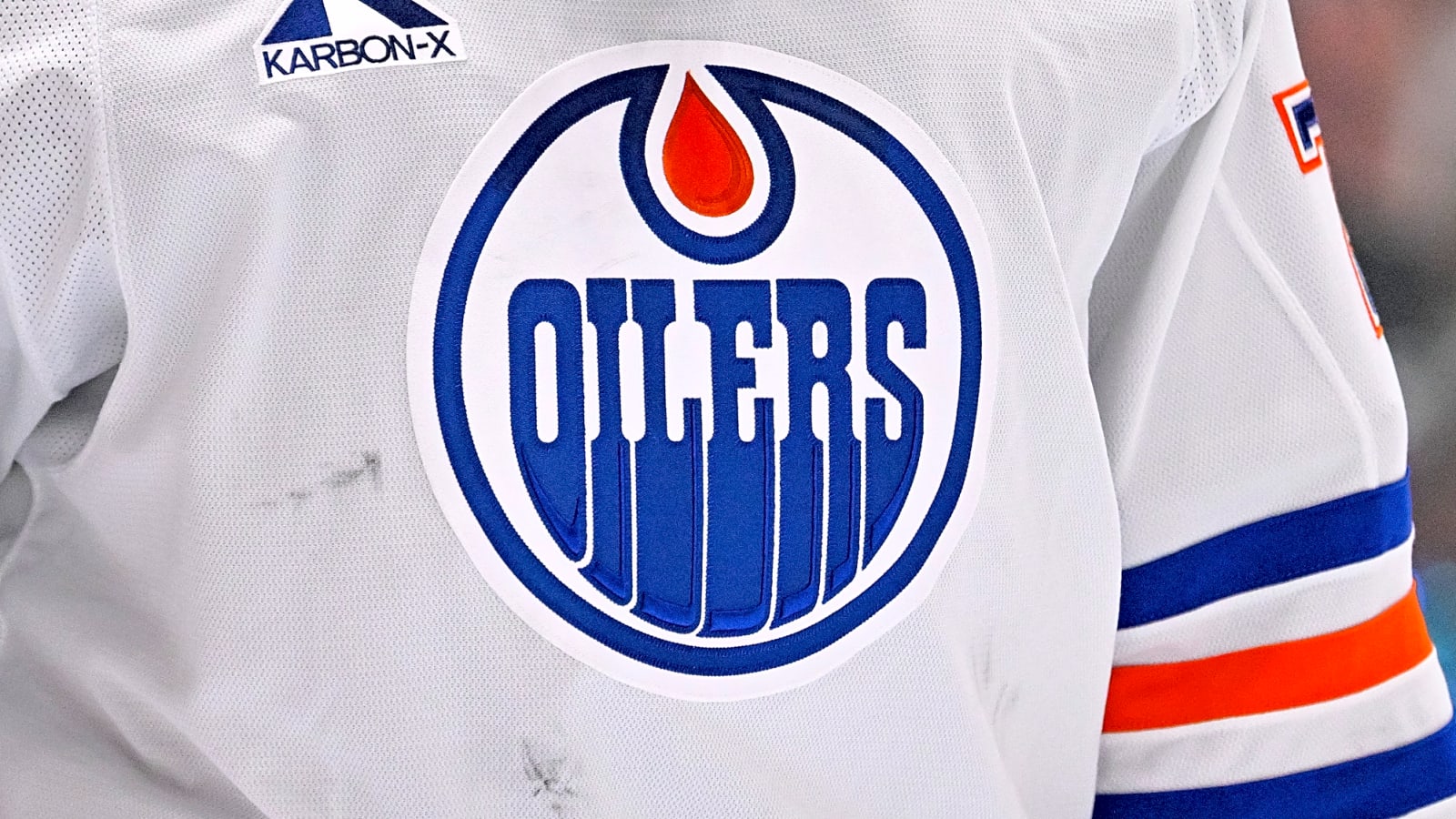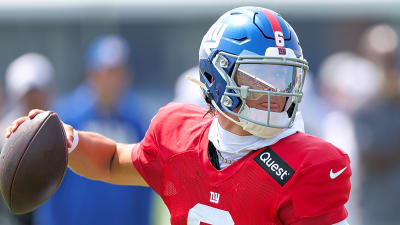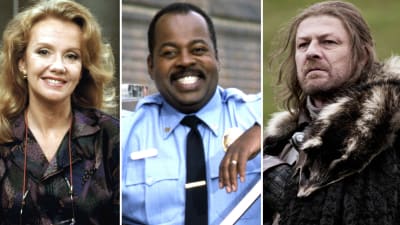
In the world of sports, nothing quite sparks a debate like a “What-If?” What if this team won that year? What if that team kept that guy? What if Tobias Rieder scored 10 goals in 2018–19? These What-Ifs or “Sliding Doors” moments allow us to imagine alternative ways events could have transpired, and throughout their 46-year history in the NHL, the Edmonton Oilers have had more than their fair share. If things had gone the other way in certain scenarios, not just team history but hockey history could have been completely different.
Over the next week, I’ll be exploring the 10 biggest “Sliding Doors” moments in Oilers history. To make things easier, we’ll be splitting the list into two pieces, one this week where we take a look at five moments before 2000, and one piece next week where we explore the What Ifs of modern Oilers history. Without further ado, let’s get started.
1. Wayne Gretzky goes to Winnipeg
Let’s start the list with one of the most famous Sliding Doors in sports history. Wayne Gretzky. Maybe you’ve heard of him? Everyone knows that Greztky began his professional career at age 17 with the Indianapolis Racers of the World Hockey Association. As the WHA died, Racers owner Nelson Skalbania sold Greztky’s rights to his friend Peter Pocklington, owner of the Edmonton Oilers. The Oilers were one of the four teams to jump from the sinking WHA and join the big leagues – The National Hockey League.
Alongside Greztky, the Oilers built a juggernaut with other young talents like Mark Messier, Glenn Anderson, Paul Coffey, and Grant Fuhr. The Oilers dominated hockey in the 1980s, and Gretzky would go on to become the sport’s consensus GOAT. However, all of this could have changed if Gretzky’s rights had been sold to the team that was originally offered them, the Winnipeg Jets.
The Jets were the WHA’s best team, and they, too, were chosen to join the NHL. Skalbania initially offered the Jets the chance to sign Gretzky before he offered him to Edmonton. Winnipeg was being forced to give up much of their Avro Cup-winning talent to join the NHL, losing players like Kent Nilsson and Bobby Hull in the 1979 Expansion Draft. With Gretzky, the Jets would not have struggled so mightily in their first two NHL seasons like they did. However, those seasons allowed Winnipeg high draft picks, where they eventually took franchise icon Dale Hawerchuk.
How different would the Jets have looked with Gretzky as their face and not Hawerchuk? Additionally, the Jets built themselves into respectability in the mid-80s before being perennially ousted by the Oilers, invariably by Gretzky’s hand. But if Greztky is in Winnipeg, does the rivalry flip? And how different do the 80s Oilers look without their cornerstone? Messier, Anderson, Coffey, Kurri, and Fuhr are plenty of talent, but how far do they get without #99? The entire history of hockey as we know it changes if Gretzky goes to Manitoba and not Alberta.
2. Steve Smith never scores the “Own Goal”
Another one of the most famous (or infamous) moments in hockey. By the mid-80s, the Oilers were a powerhouse. After dethroning the Islanders dynasty in 1983–84, the Oilers won back-to-back cups and seemed primed to three-peat as they entered the 1986 Smythe Division finals, where they met their hated provincial rivals, the Calgary Flames. The two teams played a tight series, and late in the deciding Game 7, it seemed that overtime would be needed.
Unfortunately for Edmonton, defenceman Steve Smith (on his 23rd birthday) would etch his name into hockey lore forever, bouncing an errant pass off Grant Fuhr’s skate and into the net. Smith’s own goal would prove to be the series winner, and the Flames would finally achieve their first (and only) series victory over Edmonton. Edmonton rebounded to win the Cup in 1987, with Wayne Gretzky handing Lord Stanley’s Cup off to Smith first. But what if Smith hadn’t scored the own goal?
Let’s imagine that Edmonton takes Game Seven against the Flames in overtime. They would have advanced to face a Montreal team that was primarily led by three holdovers from their 70s heyday in Bob Gainey, Larry Robinson, and Mario Tremblay. The Habs also had a wealth of young talent, with young players like Guy Carbonneau, Chris Chelios, and a little-known goalie named Patrick Roy making their first appearances in the Stanley Cup Final.
The Habs were good, but Edmonton was inevitable. If the Oilers defeated the Habs, they would have become just the 6th team to ever three-peat in the NHL. Considering Edmonton won the Cup in 1986–87 and 1987–88, it’s not wild to suggest the Oilers could have won five straight championships. That’s a mark that only the great Montreal team of the 1950s achieved with Jean Beliveau, Henri Richard, Maurice Richard, Jacques Plante, and Doug Harvey. Although Smith’s goal didn’t stop the Oilers from eventually reaching the top again, it did prevent the possibility of an era-defining run in Edmonton. Which leads us to…
3. “The Trade” Never Happens
Perhaps the most well-known transaction in sports history. Wayne Gretzky was famously traded by the Edmonton Oilers just months after capturing the Stanley Cup on August 9th, 1988. How could the Oilers trade not just the face of the franchise, not just the face of the league, but the face of the sport? The simple answer was money. Oilers owner Peter Pocklington was facing bankruptcy, and had already dealt star defenceman Paul Coffey and goaltender Andy Moog to cut costs. Gretzky’s contract was expiring, and Pocklington knew he wouldn’t be able to outbid the rest of the league for the Great One’s services.
So, Edmonton made the trade that would shake the league to its foundations. Gretzky, Marty McSorely, and Mike Krushelnyski were traded to the Los Angeles Kings in exchange for (deep breath) Jimmy Carson, Martin Gelinas, $15M cash, and Los Angeles’ first-round picks in 1989, 1991, and 1993. But what if Pocklington wasn’t forced to sell Gretzky?
Gretzky was just 27 when Edmonton made the deal. Imagine if the Oilers were able to keep him, along with the rest of their Hall of Fame roster. Losing Coffey and Moog wasn’t ideal, sure, but Edmonton still had loads of talent. Esa Tikkanen and Craig Simpson had begun to emerge in the forward core. Bill Ranford had replaced Moog as Fuhr’s backup. The Oilers were still primed to compete. They could have continued their battles with the Flames, or faced off with David Savard’s Blackhawks and Steve Yzerman’s Red Wings.
The Oilers would have been a true contender until at least the early 1990s, and it just so happens that a new power was rising at that time. Mario Lemieux and his Pittsburgh Penguins had emerged to become many people’s pick to dominate the NHL. Imagine a world where the new guard, Pittsburgh, faced the old guard, Edmonton, for Lord Stanley’s Cup. Oilers vs Penguins. Gretzky vs Lemieux. Messier vs Jagr. It would have been one of the greatest Finals matchups in sports history.
4. The 90s Cost-Cutting is Averted
The early 1990s brought a whirlwind of change for the Oilers. The Gretzky trade had not just altered the fortunes of the team on the ice, but also financially off the ice. Gretzky had received a considerable pay raise in Los Angeles, and other players quickly began to take note. As a result, the Oilers lost a number of players due to rising costs.
In 1994, the New York Rangers won the Stanley Cup with seven former Oilers playing key roles on their roster (Messier, Anderson, Tikkanen, Kevin Lowe, Craig MacTavish, Adam Graves, and Jeff Buekeboom). Jari Kurri went to LA and joined Gretzky. Charlie Huddy was left exposed on a waiver draft and went to Minnesota. All of these players continued to produce well into the 90s, and the Oilers would not truly recover from their losses until the later part of the decade. However, what if the Oilers were able to meet the new financial demands of the league?
It all starts with Adam Graves. One-third of the “Kid Line” that helped Edmonton to the 1990 Cup, Graves accepted an offer sheet from the Rangers in the summer of 1991 that Oilers GM Glen Sather chose not to match. This caused a massive reaction, with Messier telling the media that if Edmonton would not do their part to keep important players, he had no interest in being an Oiler. Imagine the Oilers keep Graves, who would turn out to be a 50-goal scorer in the Big Apple.
Instead of dealing the remaining dynasty pieces, the Oilers keep the band together for a couple more years. What if the Oilers got to pick when they said goodbye to franchise icons like Messier, Anderson, and Kurri? The Oilers could have retooled closer to the new millennium, instead of hemorrhaging talent due to trade demands. Ultimately, when the real-life Oilers did bottom out, they achieved a few high picks to help build a new roster. However, they had a few famous swings and misses, and none was more notable than the selection of Steve Kelly in 1995. But what if…
5. Shane Doan or Jarome Iginla over Steve Kelly
“WE WANT DOAN!” “WE WANT DOAN!” “WE WANT DOAN!”
“WE WANT DOAN!” “WE WANT DOAN!” “WE WANT DOAN!”
These were the chants from those in attendance at the 1995 NHL Draft. Hosted at Northlands Coliseum, fans of the hometown Edmonton Oilers made their voices heard as their team stepped up to the podium with the 6th overall selection. Would the Oilers grant the crowd’s wish and draft Shane Doan? Doan had played his junior days with the Kamloops Blazers, leading them to back-to-back Memorial Cup victories, as well as taking home the Stafford Smythe trophy as tournament MVP.
Born in Halkirk, Alberta, Doan stood 6’1 and 223lbs, a big winger that surely have become a hometown favourite with the Oilers. Or would Edmonton maybe take Doan’s teammate, winger Jarome Iginla? Born right in Edmonton, Iginla was also a supremely talented and physically gifted winger, just as willing to throw a check or drop the gloves as he was to wire a wrist shot. Either of these players would provide a massive boost to an Oilers team on the upswing, with younger talents Doug Weight, Jason Arnott, and Curtis Joseph leading the way. The time had come. The Oilers made their selection and took… Steve Kelly.
Kelly never played more than 47 games in an NHL season. He only recorded 21 points in 147 career NHL games. He tallied 254 points in 268 games during his time in the WHL and was known for his speed, which is why the Oilers selected him. With all due respect to Steve Kelly, who is better at hockey than I have ever been, he is one of the biggest busts in NHL history.
Imagine if the Oilers had heeded the fans’ chants? Shane Doan played 21 seasons with the Phoenix franchise, a heart and soul winger who never put up elite numbers, but was all motor and beloved by teammates and fans alike. Doan and Ryan Smyth might have been the most likeable tandem in Oilers history.
Or what if Edmonton had taken Iginla, the hometown boy? Iginla was a superstar in his prime. A two-time Rocket Richard winner, a big body who could skate, score, and hit. Instead, Iginla was drafted by the rival Flames and became the team’s all-time greatest player. He could have been doing it just three hours north on Highway 2. Either of these players would have given the Oilers a no-doubt slam-dunk player for years to come. Alas, it wasn’t meant to be.
For the pre-2000s, those are the five biggest sliding doors. Did we miss any? Let us know! Next week, we’ll finish the list and explore the five biggest sliding doors in modern Oilers history.
More must-reads:
- Blue Jays demolish MLB records with eye-popping Coors Field performance
- Chiefs star is feeling 'soreness' in training camp
- The 'NBA minutes leaders by season' quiz
Breaking News
Trending News
Customize Your Newsletter
 +
+
Get the latest news and rumors, customized to your favorite sports and teams. Emailed daily. Always free!








